Ravpower Car Charger Super-C 24W RP-PC022
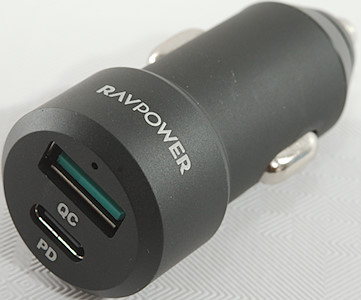
Official specifications:
- 2 port car charger
- Can charge two devices simultaneous at full speed.
- USB-C PD 24W: 5V 3A, 9V 2A, 12V 2A
- Quick charge 3.0 24W: 5V 3A, 9V 2A, 12V 2A
- Total output 5V 4.8A 24W
I got it from Amazon.de
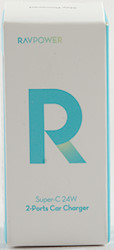
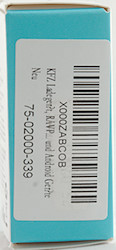
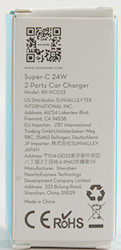
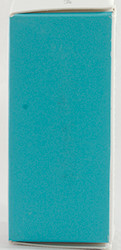
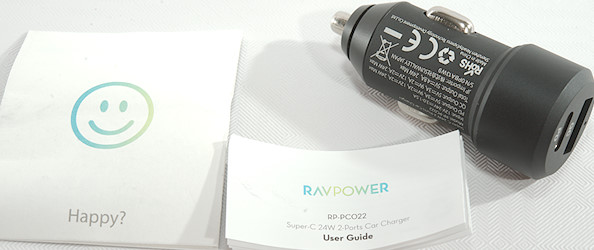
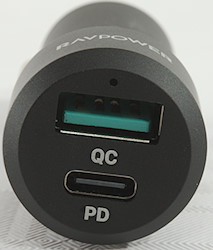
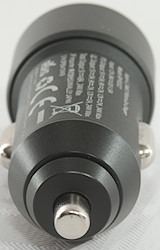
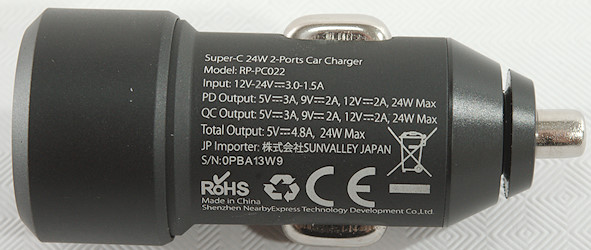
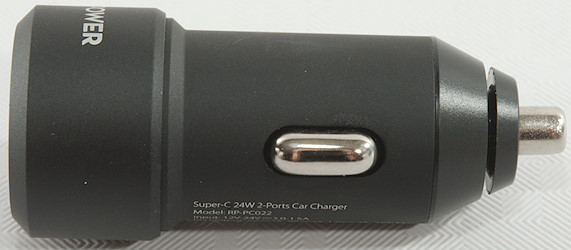
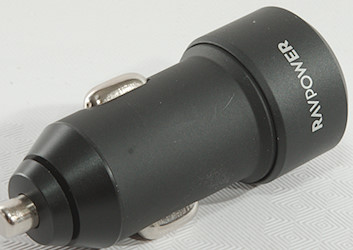
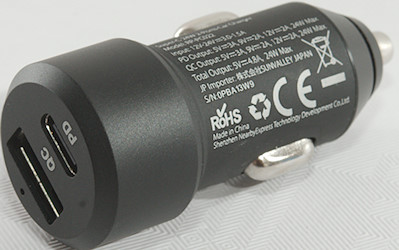
Measurements
- Power consumption when idle is 2.4mA from 12V and 2.4mA from 24V
- PD output has 5V 2A, 9V 2A, 12V 2A
- PD output is coded as Apple 2.4A, DCP, Samsung, QC2 5V
- USB output is auto coding with Apple 2.4A, Samsung, DCP, QC3, Samsung-AFC, Huawei-FCP, Huawei-SCP
- Minimum QC3 voltage is 3.6V
- Generally only one output will work at a time, but when using a resistor based USB-C coding and a standard USB device (No QC) it is possible to use both outputs.
- Both outputs can be turned on/off from the charger.
- The charger has a blue led that is visible in the QC connector and in a small hole above the connector.
- Weight: 21.0g
- Length: 57mm
- Diameter: 25.2mm
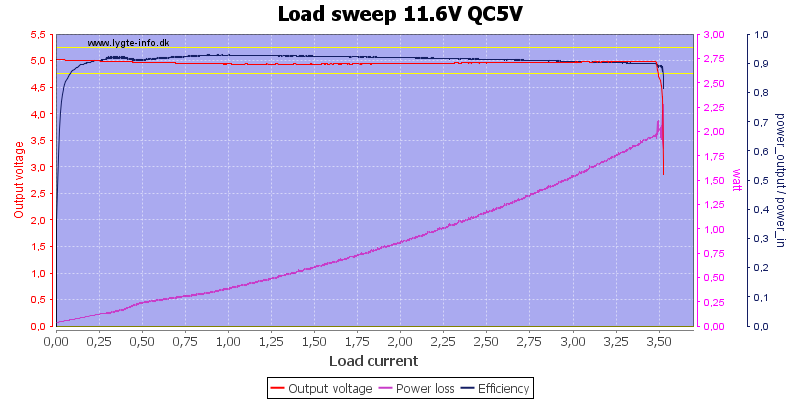
The QC output can deliver 3.5A at 5V, this matches fairly well with the 3A rating.
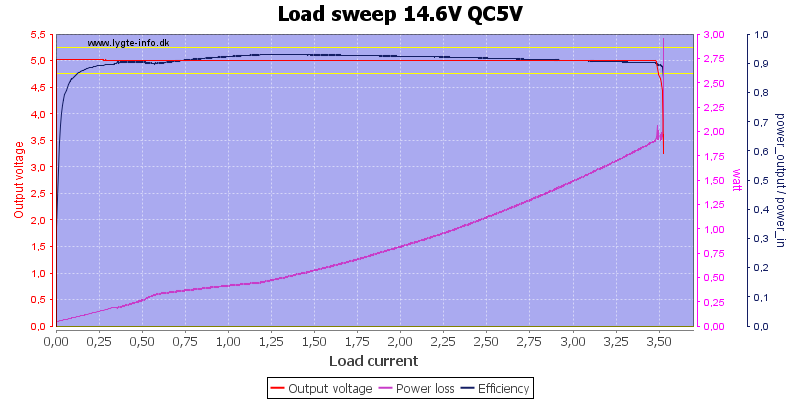
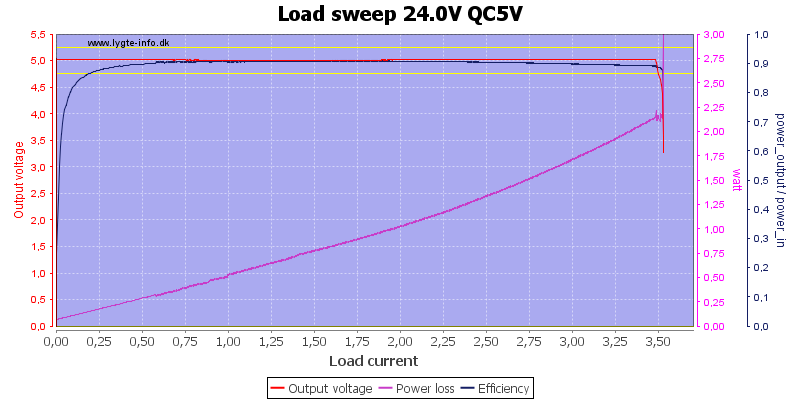
Change in input voltage do not affect the current limit or output voltage.
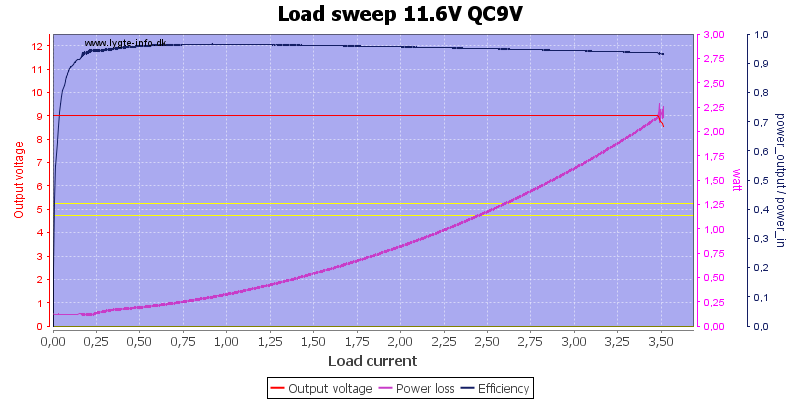
At 9V QC output it is the same 3.5A, rating only says 2A.

At 12V the current is down to 2.4A and there is a voltage drop through the charger as expected.
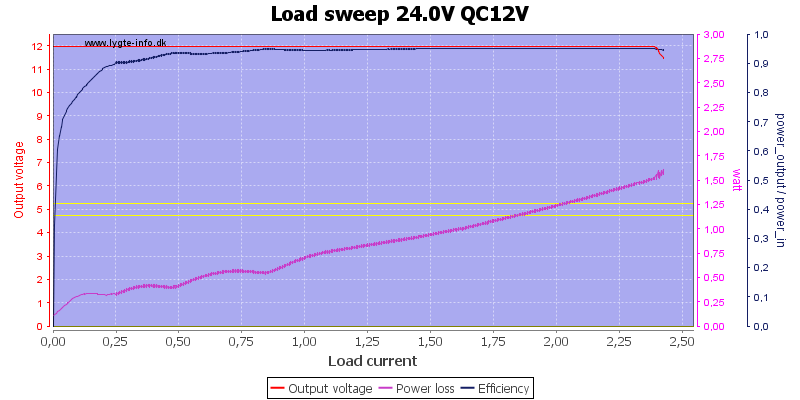
Higher input voltage means the output voltage will be 12V and do not change the current limit.
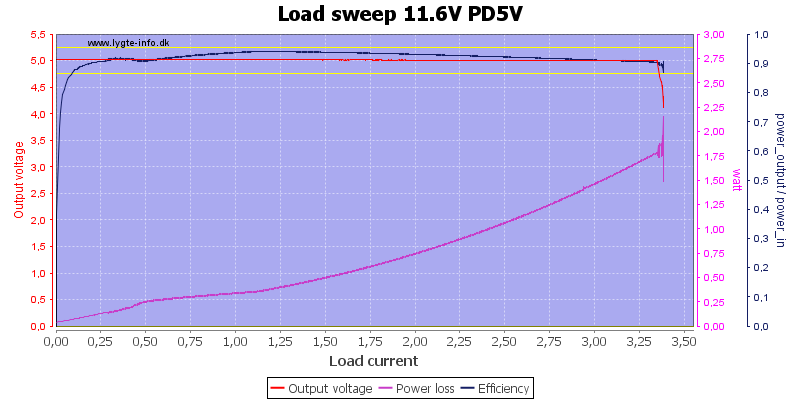

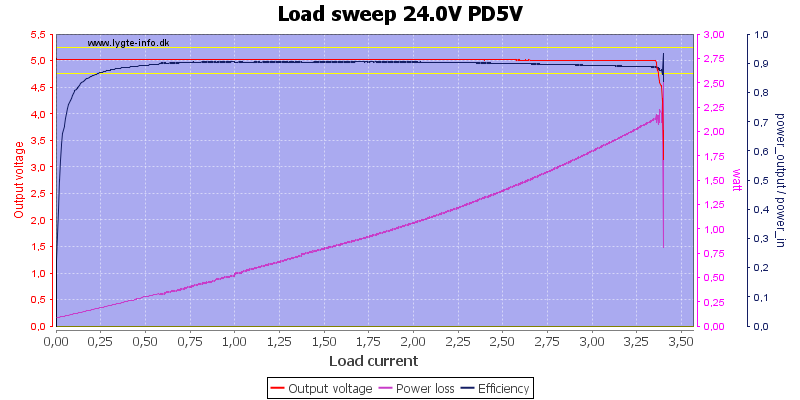
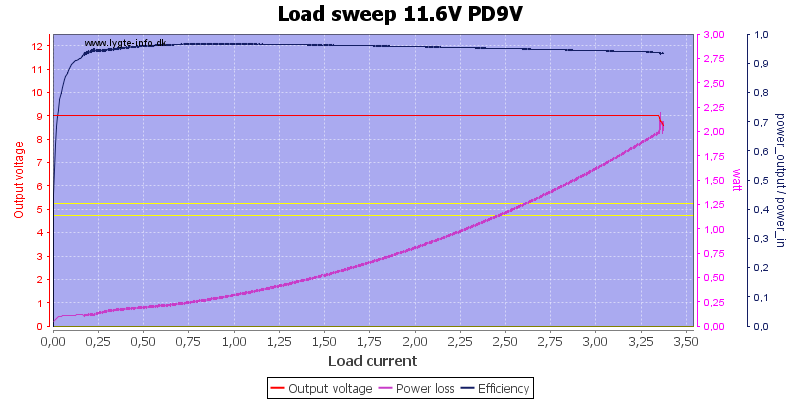

For PD the limits and voltages are the same.
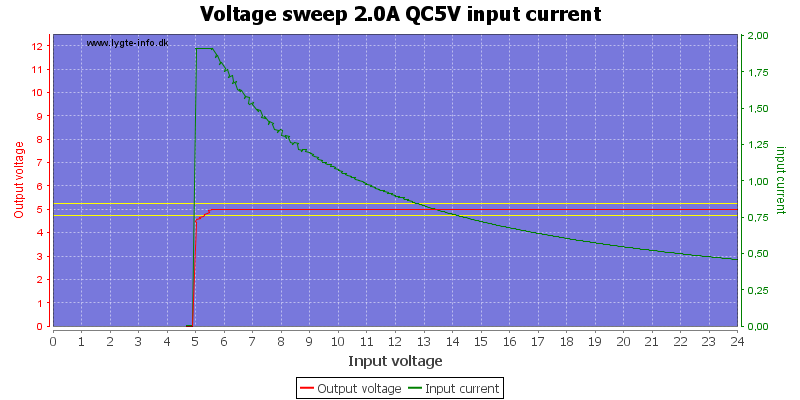
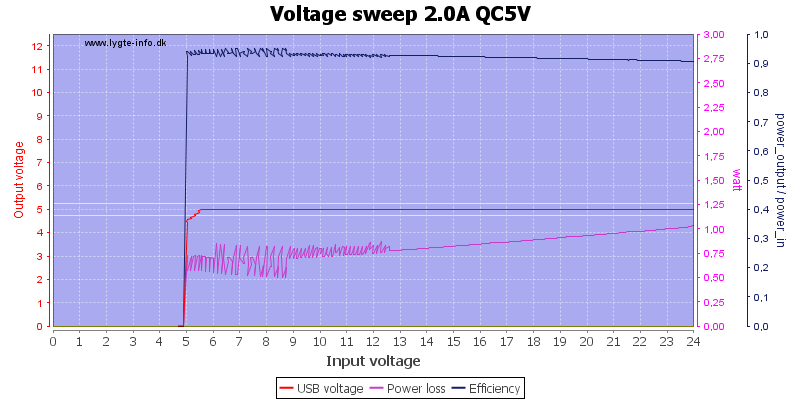
The output works with only 0.5V drop in the charger, that is very good.

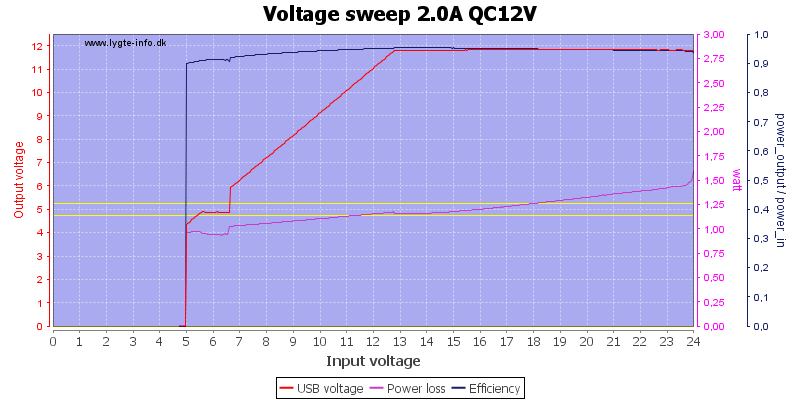
At 2A the charger need about 1V extra to maintain 12V output.
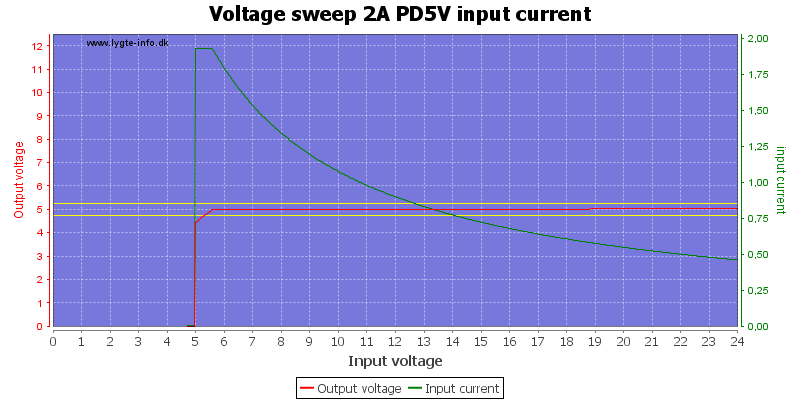
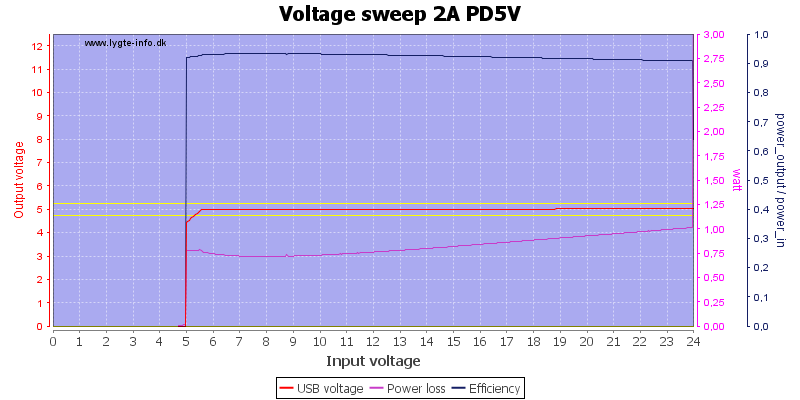
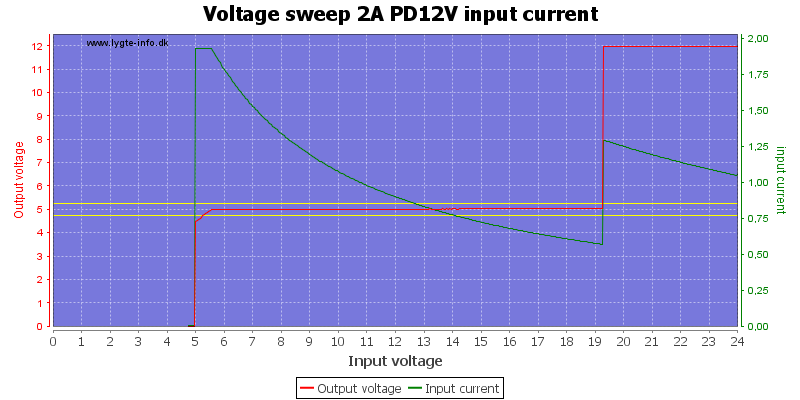
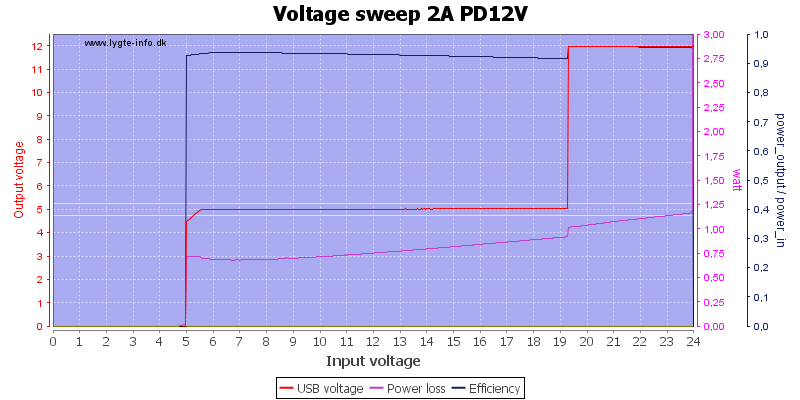
For some reason it dropped out of 12V PD when the voltage was slowly adjusted down.
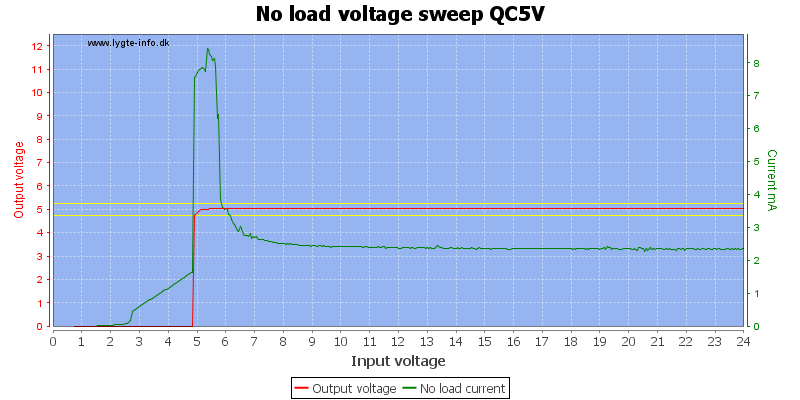
The unload current consumption is fairly low and do not vary with voltage.
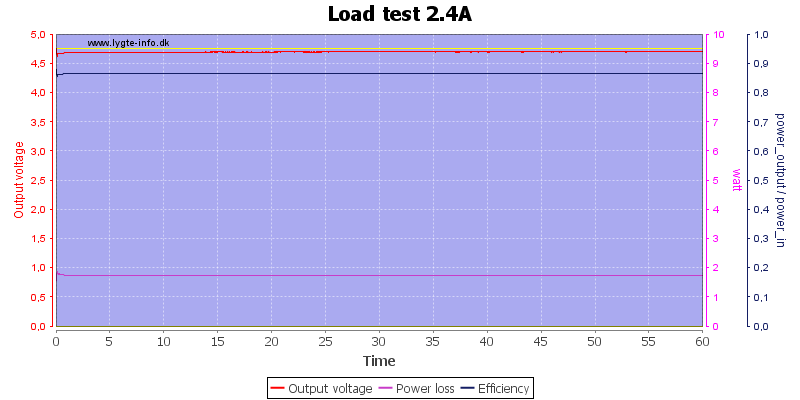
I did this test at 2.4A on the QC output.
The temperature photos below are taken between 30 minutes and 60 minutes into the one hour test.
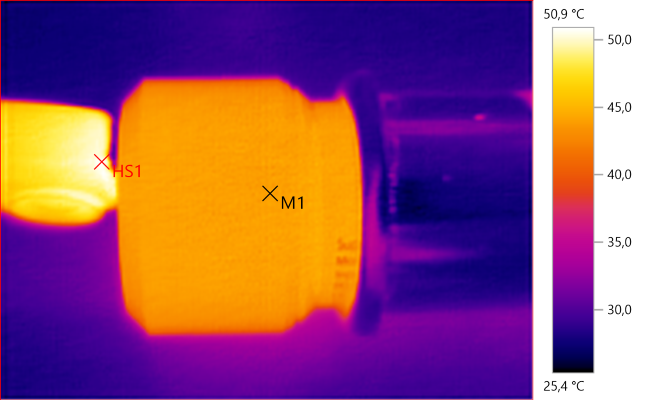
M1: 44.2°C, HS1: 50.9°C
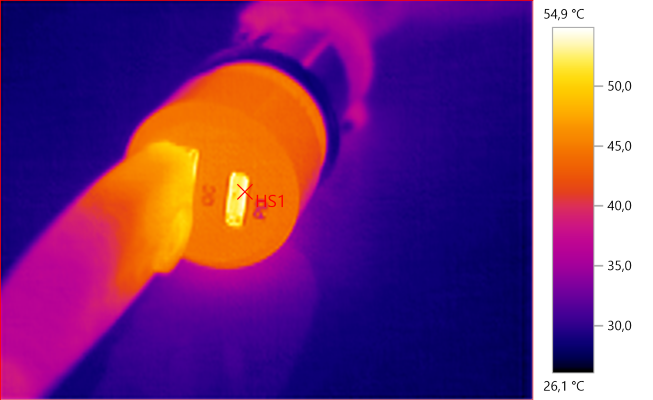
HS1: 54.9°C
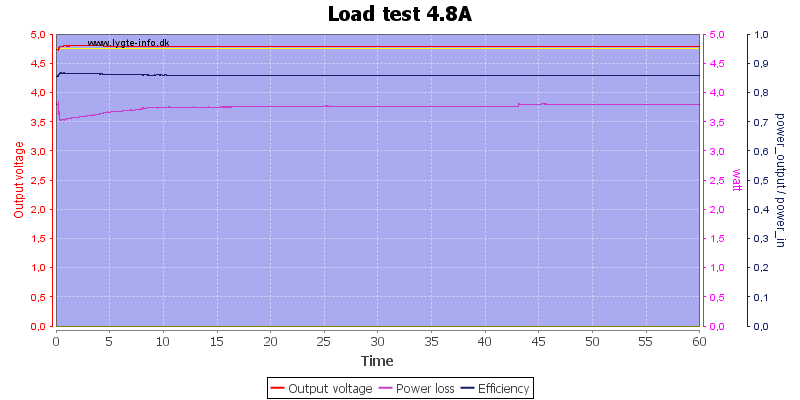
Using both output on 5V I could also do a 4.8A test.
The temperature photos below are taken between 30 minutes and 60 minutes into the one hour test.
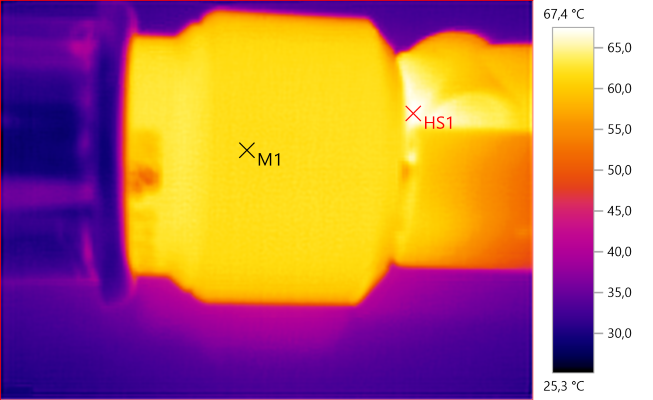
M1: 61.8°C, HS1: 67.4°C
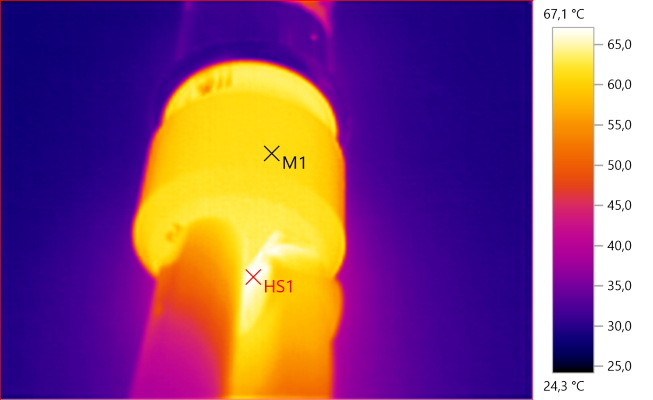
M1: 61.6°C, HS1: 67.1°C

Noise at 0.5A output is 4mV rms and 70mVpp

Noise at 1A output is 4mV rms and 95mVpp
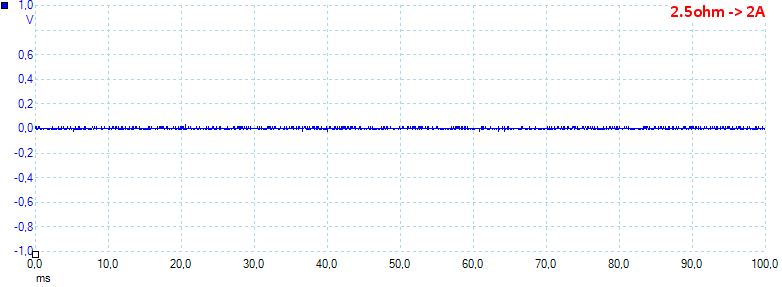
Noise at 2A output is 5mV rms and 88mVpp

Noise at 0.9A output is 3mV rms and 72mVpp

Noise at 1.2A output is 10mV rms and 70mVpp
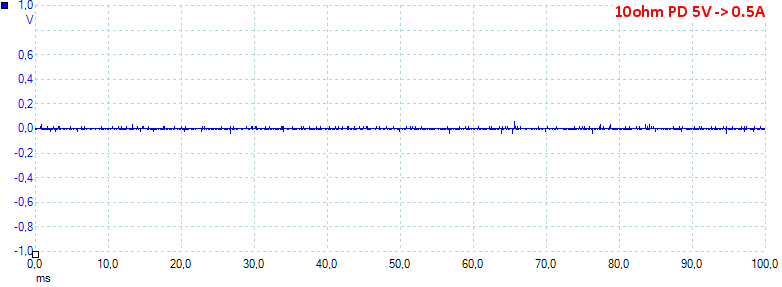
Noise at 0.5A output is 11mV rms and 211mVpp
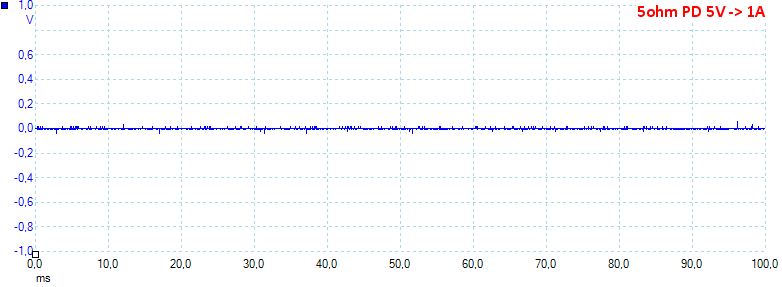
Noise at 1A output is 5mV rms and 125mVpp
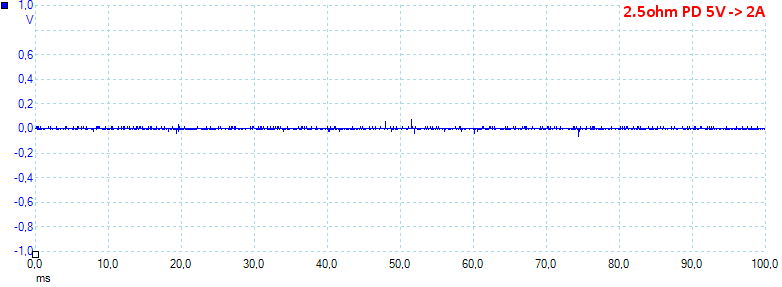
Noise at 2A output is 5mV rms and 179mVpp
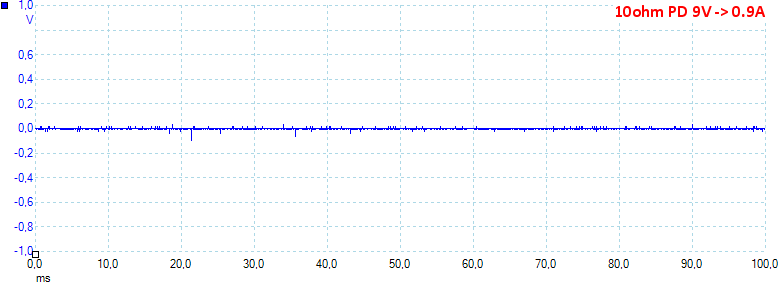
Noise at 0.9A output is 11mV rms and 161mVpp
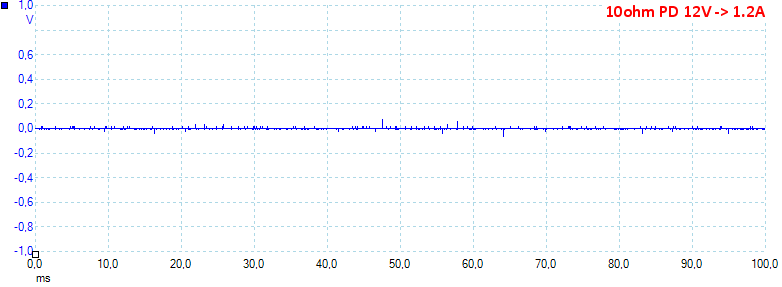
Noise at 1.2A output is 5mV rms and 165mVpp, all low values.
Tear down
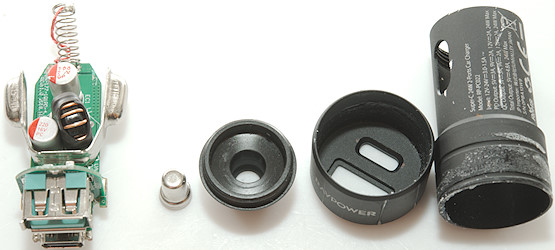
I could unscrew the bottom, the top had to be pulled by wiggle it around while applying pull (It was glued on).
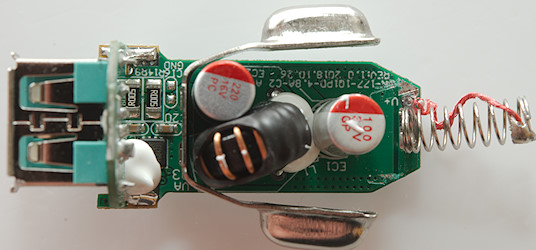
On this side is a single inductor (L1), two current sense resistors (R9 & R14: each 0.005ohm) and a chip.
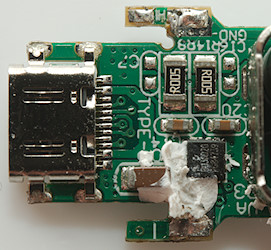
A bit more work and I could see it was a dual mosfet (RU30D20H), this is obvious the chip that is used to turn the two USB connectors on and off.
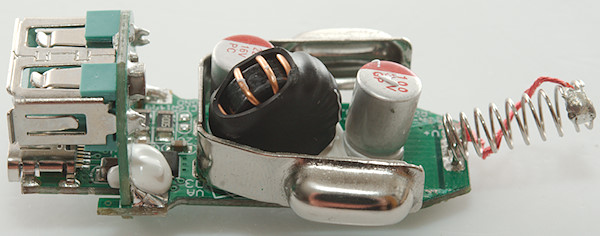
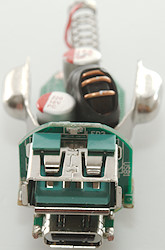
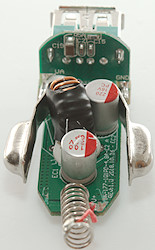
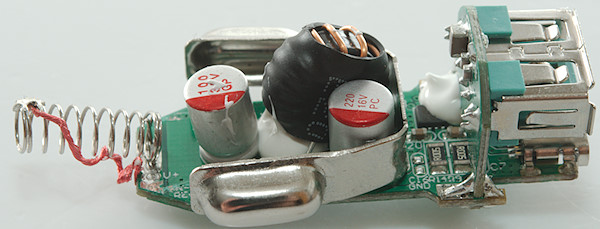
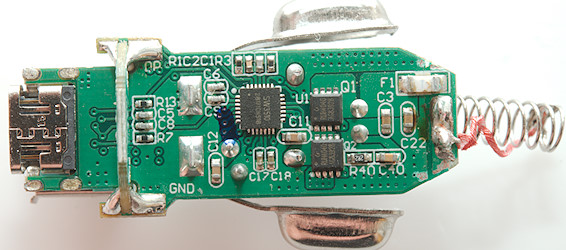
Here is the input fuse (F1), a switcher and dual USB controller (U1: SW3510) with two transistors (Q1 & Q2: RUH4040)
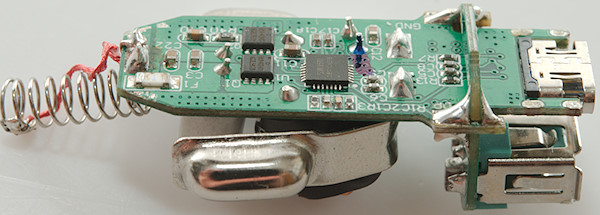
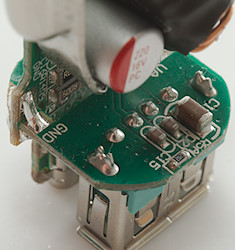
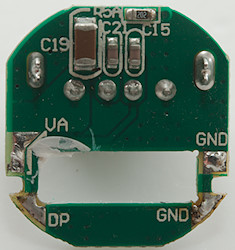
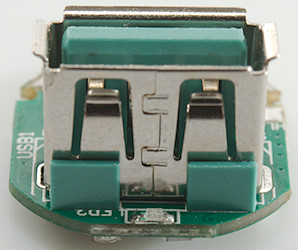
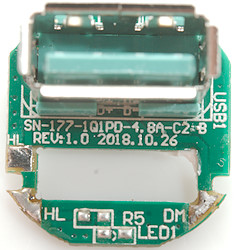
The front has a LED, a few capacitors and a resistor, no active parts.
Conclusion
This charger is mostly for one device at a time, not for two. It only has one converter, this means when using PD or QC it will disable the opposite output. This is not clearly stated in the specifications. The automatic output switch did also turn on/off a couple of extra times.
The PD coding do not match the specifications completely.
The output power is fine for a single device and the charger supports just about everything, it also has low noise and good overload protection.
Notes
Read more about how I test USB power supplies/charger
Compare car chargers and other DC supplied chargers




























































